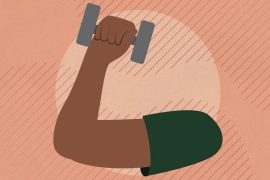Frozen shoulder:
Frozen shoulder, or adhesive capsulitis, is a prevalent condition impacting millions globally, characterized by inflammation and stiffness in the connective tissue surrounding the shoulder joint, leading to limited mobility and persistent pain. The positive aspect is that, with patience and consistent effort, individuals can often overcome this condition through simple stretching exercises. These exercises aim to gradually improve shoulder flexibility and reduce stiffness. While the road to recovery may require time and dedication, the potential for improvement highlights the effectiveness of regular stretching in addressing the symptoms of frozen shoulder, providing hope for those seeking relief from this challenging condition.
Causes of frozen shoulder:
The causes of frozen shoulder, or adhesive capsulitis, involve a nuanced exploration of the intricate mechanics of the shoulder joint. This joint relies on a flexible, cushion-like capsule for shock absorption and lubrication, facilitating smooth arm movements. However, when this capsule tightens and becomes inflamed, it hinders shoulder motion. While the precise triggers of this condition remain unclear, identified factors include recovery periods following surgery or injury, direct trauma to the shoulder, chronic conditions like diabetes or thyroid disorders, prolonged shoulder immobility, and age, typically manifesting between 40 and 60 years. Recognizing these factors is crucial for developing effective treatments, often incorporating gentle stretching techniques focused on the affected capsule to restore mobility.
Symptoms and diagnosis:
Recognizing a frozen shoulder involves noting symptoms such as persistent shoulder pain, difficulty raising the arm, and limited range of motion. Diagnosis typically incorporates a thorough physical examination, where a healthcare professional assesses the shoulder’s mobility and identifies areas of discomfort. Additionally, imaging tests, such as X-rays or MRI scans, may be employed to visualize the shoulder joint and surrounding structures, helping confirm the diagnosis.
Stretches to mobilise frozen joints:
Mobilizing frozen shoulder joints doesn’t require elaborate equipment or flawless technique; simple stretches using household items, when performed consistently and gently, can significantly improve shoulder mobility. Here are some effective daily exercises:
1. Towel Stretch:
- Hold one end of a towel in your good arm.
- Use the affected arm to grasp the opposite end of the towel behind your back.
- Gently pull the towel upward with your good arm, allowing the affected arm to stretch behind you.
2. Pendulum Stretch:
- Lean over a table or surface with your unaffected arm for support.
- Allow the affected arm to hang down and swing gently in a circular motion.
- Perform clockwise and counterclockwise motions to encourage flexibility.
3. Finger Walk:
- Stand facing a wall and use your fingers to “walk” up the wall.
- Gradually raise your arm as high as comfortably possible.
- Repeat the motion, gradually increasing the height of your arm.
4. Cross-Body Reach:
- Use your good arm to lift the affected arm at the elbow.
- Gently bring the affected arm across your body.
- Hold the stretch for a few seconds, feeling the stretch in your shoulder.
5. Armpit Stretch:
- Reach the affected arm behind your back and attempt to touch the middle of your back.
- Use your good arm to gently assist the affected arm in reaching as far down as possible.
Performing these exercises regularly, in a controlled and gentle manner, can contribute to improving the flexibility and mobility of a frozen shoulder over time. It’s crucial to listen to your body and avoid pushing yourself too hard, seeking guidance from healthcare professionals if needed.
Disclaimer:
The information contained in this article is for educational and informational purposes only and is not intended as a health advice. We would ask you to consult a qualified professional or medical expert to gain additional knowledge before you choose to consume any product or perform any exercise.







